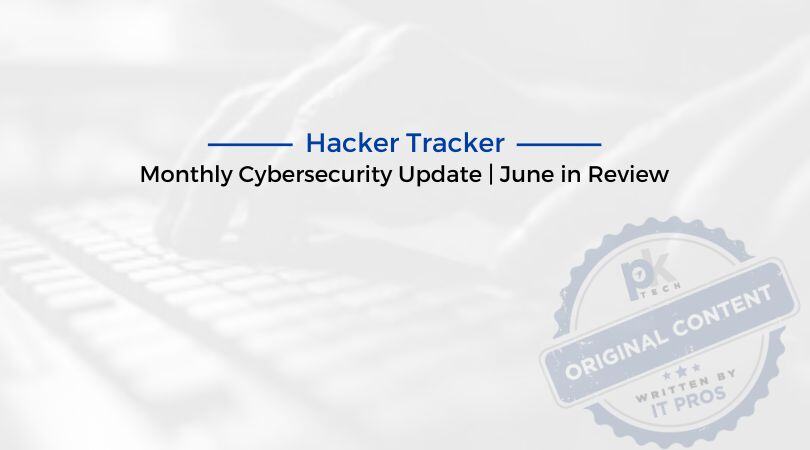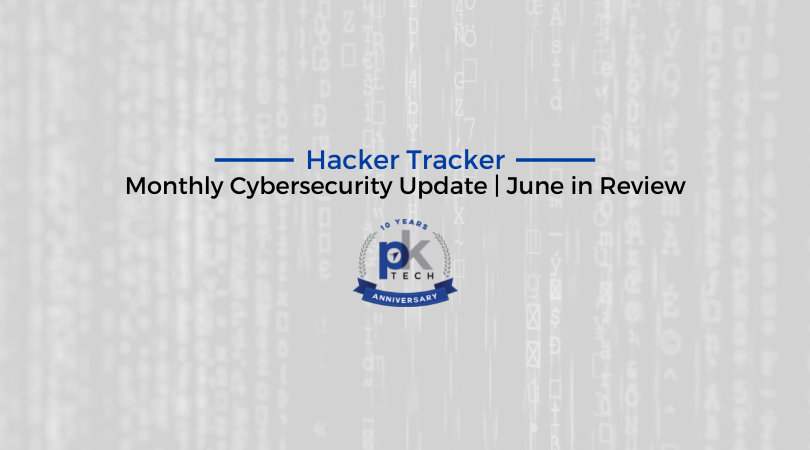Hacker Tracker | May In Review
Monthly Cybersecurity Update

Where are we in the world of cybersecurity? It’s easy to miss the cybersecurity threats and attacks happening right in our “backyard”. Our goal at PK Tech is to educate and offer proactive steps for cybersecurity safety. It’s important to be aware–without being afraid–of the cybersecurity threats that are real threats for your business. PK Tech aims to be a leading educator and support tool in the world of cybersecurity.
Check out our monthly “Hacker Tracker” for the latest in cybersecurity hacks, breaches and updates…
#1- Healthcare has always been a steady target of ransomware gangs, but things appear to be heating up. Experts urge healthcare organizations to take proactive steps to protect themselves including: deploying public key cryptography and digital certifications to authenticate connections with the network, Internet of Things medical devices, and electronic health record systems. If you are a clinic or larger organization in the healthcare sector, make sure you are working with a qualified IT security team to create a proactive plan to protect yourself given today’s cybersecurity climate.
#2- From the CrowdStrike attack, we learn the old but nonetheless important lesson of verifying senders. Whether it’s an email, a text message, or a cybersecurity alert, always call to verify the sender. Hackers continue to use this tactic for one simple reason: it continues to work. If you work with a managed service provider for cybersecurity, make sure you know the IT maintenance schedule and ask for phone verification when they’re running updates, etc.
#3- The Microsoft attacks are a bit alarming. Despite the fact that the Biden administration made MFA mandatory for federal agencies (which further encouraged its use for non-federal organizations and individuals), hackers have now found a way to reach their victims even in the presence of MFA. MFA doesn’t not work, but since the browser session cookie has been stolen by hackers, it doesn’t matter how the user logged into the site; the attacker can still get authenticated thanks to the second cookie. Where this we’ll lead and what this will mean for the security reputation of MFA, only time will tell.

Where are we in the world of cybersecurity? It’s easy to miss the cybersecurity threats and attacks happening right in our “backyard.” Our goal at PK...

Where are we in the world of cybersecurity? It’s easy to miss the cybersecurity threats and attacks happening right in our “backyard.” Our goal at PK...